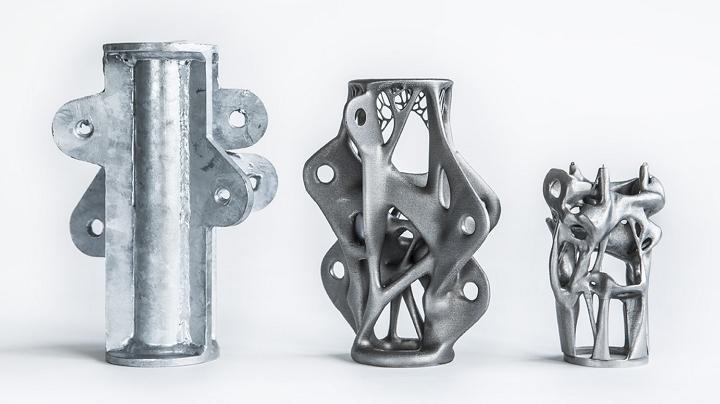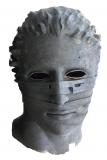Results 1 to 8 of 8
Thread: 3D Printed Structural Steel
-
06-07-2014, 01:41 PM #1
3D Printed Structural Steel
A company Called Arup has developed technology enabling them to create structural strength steel, which can be used for a variety of construction applications. 3D printing has enabled the company to create all kinds of intricate pieces that traditional casting methods would not allow them to. Also, using 3D printing cuts down significantly on wasted material over the traditional methods used. More details on Arups 3D steel printing can be found here: http://3dprint.com/5505/3d-printed-steel-arup/
Check out one of these steel parts that Arup has been using which has been 3d printed:

-
06-07-2014, 02:52 PM #2
-
06-07-2014, 07:24 PM #3
They use algorithms to create bio-mechanical like structures that actually work as functioning support, I've been watching these guys for a while.
-
06-08-2014, 12:16 PM #4Student

- Join Date
- Jun 2014
- Location
- Ghent
- Posts
- 1
Hey Geoff, Do you have any more information about the kind of algorithms they use and where I can find this info? I'd like to know more about the experiments they're working on. Which 'guys' have you been watching? Sorry about all these questions. I'm just very interested in this topic. Next year I'm going to do a Master Project about the usability of this additive manufacturing in the civil industry and the connection with computer aided engineering software.
-
05-11-2015, 03:55 PM #5
Over the course of his long and distinguished career, philosopher and engineer Ove Arup worked with the great avant-garde architects of his day and gained fame for his contribution to the Sydney Opera House project. Arup and his firm became expert in acoustics and seismic engineering and they even designed transport containers for nuclear waste. Now Arup engineers continue that legacy of innovation by their work in 3D design and printing for construction. Arup is now designing critical structural steel components for complex architectural projects as they ride the new wave in 3D design for construction and engineering. You can read the entire story here: http://3dprint.com/64376/cutting-edge-3d-printing/
Below is a look at a traditionally manufactured part (left) compared to 3D printed parts (center, right):

-
06-01-2015, 07:15 AM #6
Nice work done by Arup and its partners.........!!!!!! They are currently working on 3D printing.
-
06-01-2015, 08:16 AM #7
The advantage of the non 3D printed one is you can repair it somewhat. After such heavy topological optimization, you can only replace it when it's damaged. It's not a problem per se but you need to prepare your logistics differently.
-
06-01-2015, 10:08 AM #8Staff Engineer

- Join Date
- Dec 2013
- Location
- Georgia
- Posts
- 934
To be honest, with brackets of this scale in an architectural application, you have to replace the traditionally manufactured part as well, since there's no way to know for sure what else might be damaged in the part that is easier than just making a new one.






 Reply With Quote
Reply With Quote








Extruder not feeding during print,...
04-28-2024, 02:02 PM in Tips, Tricks and Tech Help